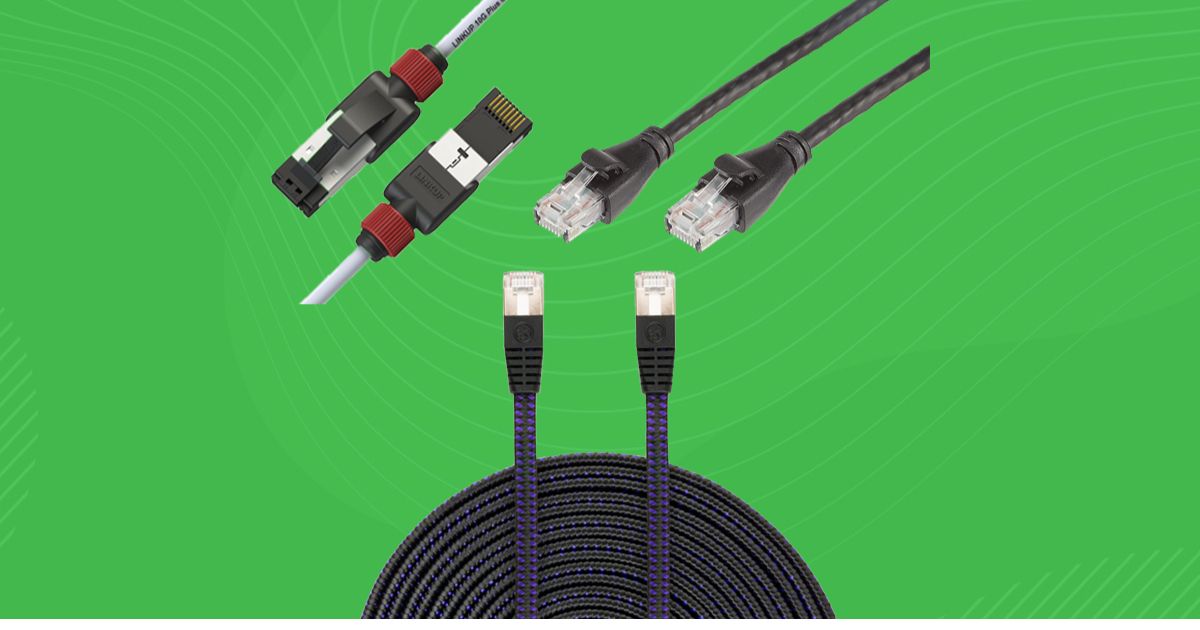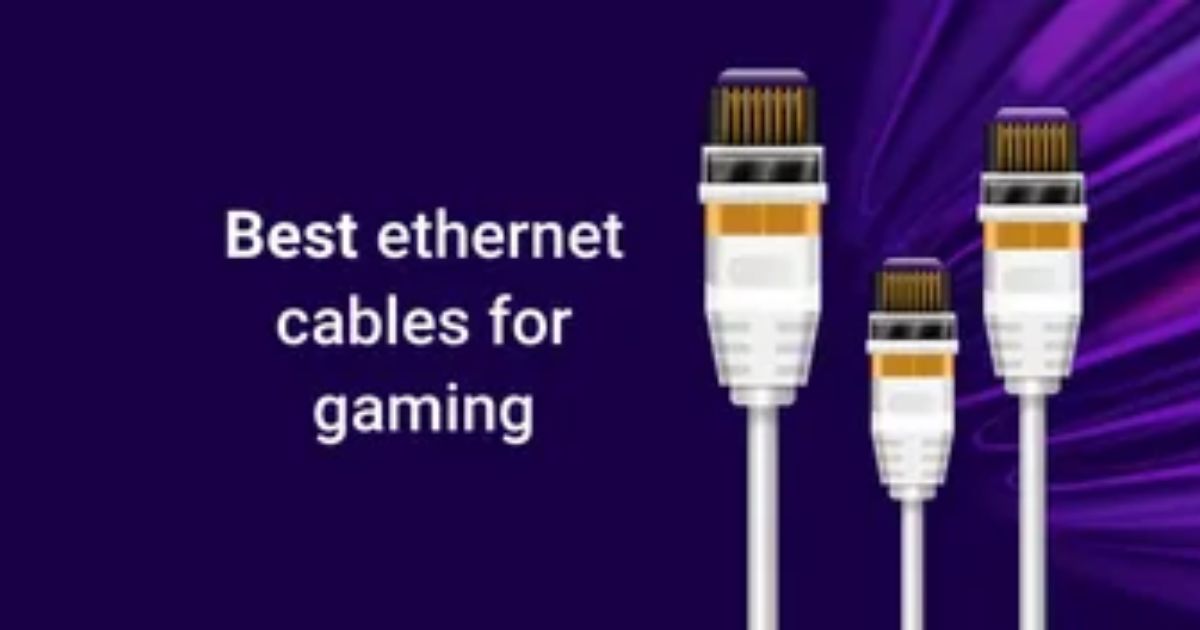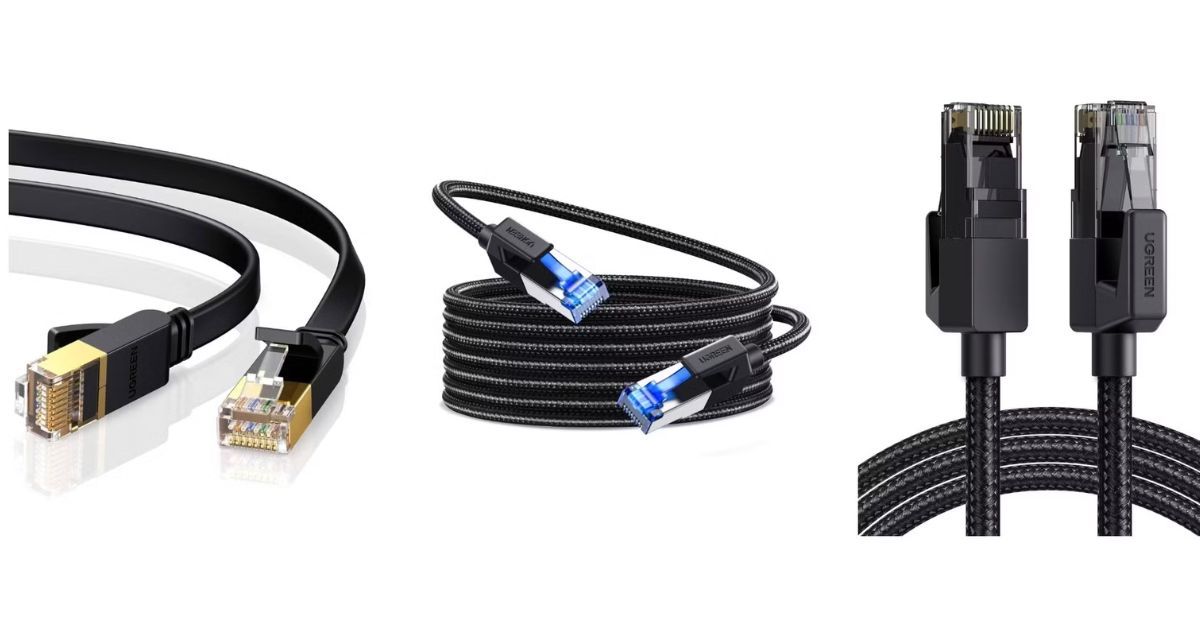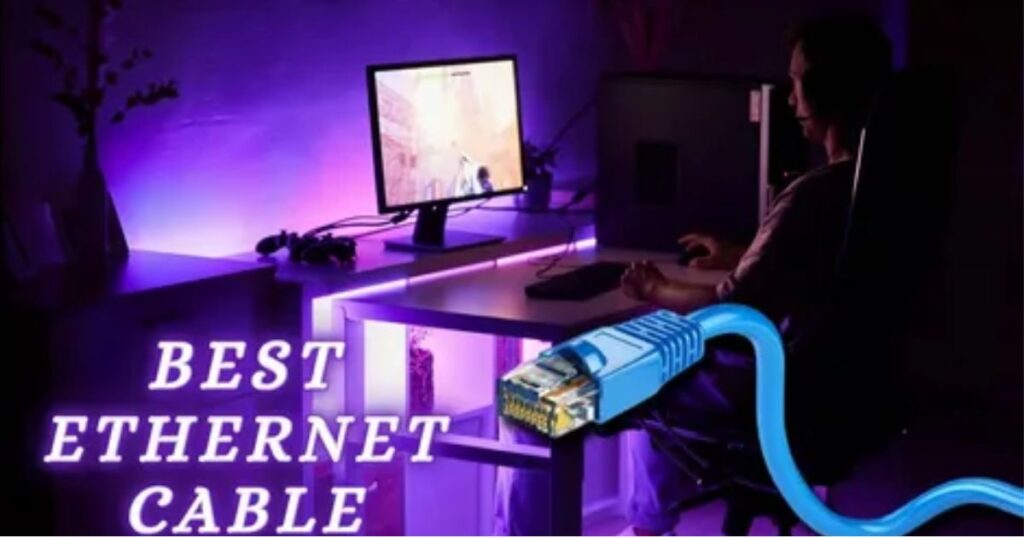When it comes to competitive or even casual online Gaming, having access to a stable, fast, and reliable internet can make the difference between winning and losing. While Wi-Fi is convenient, it often struggles with interference, lag spikes, and dropped signal issues that can ruin an intense gaming session. That’s why many gamers turn to Ethernet cables for a wired connection that ensures consistent speed and low latency.But with so many options on the market, Cat5e, Cat6, Cat6a, Cat7, and Cat8, how do you know which one is the best Ethernet cable for Gaming? Each category offers different speeds, bandwidths, and levels of shielding, making the choice a bit confusing for beginners and even experienced gamers.
In this guide, we’ll break down the different types of Ethernet cables, the key specs for Gaming, and how to choose the right one for your setup. Whether you’re a casual player or a hardcore eSports competitor, the best ethernet cable for ps5 can transform your gaming experience, delivering faster, smoother, and more reliable gameplay every time you log on.
What Is the Best Ethernet Cable for Gaming?
In the realm of online Gaming, every instant is significant. Even the best gaming sessions can be ruined by lag, excessive ping, and erratic connections. Even while Wi-Fi has gotten better over time, nothing compares to a wired network’s speed and stability. Ethernet connection. But with so many options, Cat5e, Cat6, Cat6a, Cat7, Cat8, choosing the best Ethernet cable for Gaming can feel overwhelming.The truth is, the best cable depends on your internet speed, setup, and future-proofing needs. For most gamers, Cat6 or Cat6a cables offer the perfect balance of affordability and performance, supporting speeds up to 10 Gbps and bandwidths of 250–500 MHz. Windows 10 vs Windows If you want to go all out and prepare for next-gen internet speeds, Cat7 and Cat8 deliver ultra-high bandwidth (up to 2000 MHz) and faster data transfer, but they can be pricey and often unnecessary for home gaming.
Key factors to consider include cable length (longer runs can mean signal loss), shielding (vital if you’re in a high-interference area), and build quality (look for durable connectors and snagless designs). Whether you’re streaming, playing competitively, or want zero lag, investing in the right Ethernet cable can dramatically improve your gaming experience, making every match smoother and more responsive.
Which Ethernet Cable is best for Gaming

The speed of your internet determines which Ethernet cable is better for Gaming. Consider setting up, and whether you want to future-proof your network. Here’s a quick breakdown:
Cat6 – Best for Most Gamers
- Supports up to 10 Gbps speed and 250 MHz bandwidth.
- Affordable and widely available.
- Perfect if your home internet is under 1–10 Gbps.
Cat6a – Best Balance of Price & Future-Proofing
- Handles 10 Gbps over longer distances with 500 MHz bandwidth.
- Better shielding than Cat6, reducing interference and lag.
- Great for serious gamers who want a long-term solution.
Cat7 – High-End Option
- Supports 10–40 Gbps and 600 MHz+ bandwidth.
- Heavily shielded for maximum signal stability.
- More expensive and often overkill for most gaming setups.
Cat8 – Ultra-Future-Proof (but unnecessary for most)
- Supports 25–40 Gbps with up to 2000 MHz bandwidth.
- Best for data centers, not living rooms overkill for Gaming unless you want extreme future-proofing.
For most gamers, a Cat6 or Cat6a cable is the sweet spot it’s fast, affordable, and reliable for years to come. If you want extra shielding and plan on upgrading your internet to ultra-fast speeds in the future, Cat6a or Cat7 is a wise investment.
Essential Things to Take Into Account While Selecting an Ethernet Cable for Gaming
To find the best Ethernet cable for your gaming needs, consider the following factors:
Speed and Bandwidth
Your cable must support the speeds provided by your ISP and gaming device. Most modern gaming consoles and PCs have Gigabit Ethernet ports (1 Gbps), making Cat6 or Cat6a sufficient. If you have a 2.5 Gbps fiber connection, Cat6a or Cat8 is recommended to avoid bottlenecks. Check your router and device specs to ensure compatibility.
Latency
Low latency (ping) is critical for online Gaming, as it determines how quickly your actions register on the server. Ethernet cables inherently offer lower latency than Wi-Fi due to their direct connection. Higher-category cables (Cat6a, Cat7, Cat8) with better shielding further reduce signal loss, ensuring minimal lag.
Shielding
Shielding protects against electromagnetic interference (EMI) from nearby electronics, power lines, or other cables. Options include:
UTP (Unshielded Twisted Pair): Suitable for low-interference environments like most homes.
STP/FTP (Shielded/Foiled Twisted Pair): Better for setups with multiple devices or cables running near power lines. Cat6a, Cat7, and Cat8 often feature shielding.
For Gaming in a busy household with many devices, shielded cables (e.g., Cat6a or Cat8) provide a cleaner, more stable connection.
Cable Length
Longer cables can introduce signal degradation, increasing latency. For Gaming, keep cable runs under 50 feet (15 meters) if possible. Cat6a and Cat8 maintain performance over longer distances (up to 100 meters for 10 Gbps), but for short runs (under 10 meters), even Cat5e can suffice.
Durability and Design
Gaming cables endure frequent movement or tight routing. Look for:
- Gold-plated RJ45 connectors: Reduce corrosion and ensure reliable connections.
- Snagless connectors: Prevent clip damage during installation.
- Flat vs. Round: Flat cables are easier to hide under carpets or along walls, while round wires are more durable for exposed runs.
- Braided or PVC jackets: Enhance durability and reduce wear.
Compatibility
Ensure the cable’s RJ45 connectors are compatible with your gaming device (PC, PS5, Xbox, etc.) and router. Most modern devices use standard RJ45, but Cat7 may require GG45 connectors for maximum performance, what ethernet cable is best for gaming which aren’t common in home setups.
Budget
Cat5e and Cat6 are budget-friendly, while Cat6a and Cat8 are pricier but offer better performance and future-proofing. Avoid overspending on Cat8 if your ISP or device can’t utilize its 40 Gbps speeds.
Top Ethernet Cables for Gaming
Based on performance, durability, and user reviews, here are the top Ethernet cables for Gaming tested for speed, stability, and gaming performance:
1. DbillionDa Cat8 Ethernet Cable
- Specs: 40 Gbps, 2000 MHz, double-shielded (S/FTP), gold-plated RJ45, weatherproof.
- Why It’s Great: This cable is a beast for high-speed Gaming, supporting multi-gigabit connections with minimal latency. Its double shielding reduces EMI, making it ideal for crowded setups. SpectreForge: Crafting Elite GPO Private Server Codes The weatherproof design suits indoor or outdoor use, perfect for running cables to a gaming den or office.
- Best For: Professional gamers, streamers, or those with 2.5 Gbps+ fiber connections.
- Cons: Expensive and overkill for standard 1 Gbps setups.
- Price: ~$15–$30 for 6–50 ft.
2. Cable Matters Snagless Cat6 Ethernet Cable
- Specs: 10 Gbps, 550 MHz, UTP, gold-plated RJ45, snagless connectors.
- Why It’s Great: A reliable, affordable option for most gamers, Astro A40 TR MixAmp Pro Setup Guide for Gamers this Cat6 cable delivers excellent performance for 1–10 Gbps connections. Its snagless design and PVC jacket ensure durability, while the 550 MHz bandwidth supports modern gaming needs.
- Best For: Casual to semi-competitive gamers on a budget.
- Cons: Unshielded, so less ideal for high-interference environments.
- Price: ~$10–$20 for 3–25 ft.
3. Orbram Cat8 Ethernet Cable

- Specs: 40 Gbps, 2000 MHz, S/FTP, nylon braided, gold-plated RJ45, flat design.
- Why It’s Great: This cable combines Cat8’s blazing speeds with a durable, flat, braided design that’s easy to route under carpets or along walls. Its shielding minimizes interference, ensuring stable performance during intense gaming sessions.
- Best For: best cat 8 ethernet cable for gaming Gamers who want future-proofing and clean cable management.
- Cons: Pricier than Cat6 options.
- Price: ~$20–$40 for 15–50 ft.
4. Jadaol Cat6 Ethernet Cable
- Specs: 10 Gbps, 250 MHz, UTP, flat design, RJ45 connectors.
- Why It’s Great: This budget-friendly Cat6 cable is perfect for gamers who need a reliable, easy-to-hide cable without breaking the bank. Its flat design simplifies installation, How to Use Letterboxd for Video Games and it handles most gaming consoles’ bandwidth needs.
- Best For: Casual gamers or those with simple setups.
- Cons: Limited bandwidth compared to Cat6a or Cat8.
- Price: ~$10–$25 for 50–100 ft.
5. Snowkids Cat8 Ethernet Cable
- Specs: 40 Gbps, 2000 MHz, S/FTP, flat design, RJ45 connectors.
- Why It’s Great: Another excellent Cat8 option, this cable offers high-speed performance with a flexible, flat design for easy routing. Its shielding ensures stability in busy households, and a large variety of devices can use it.
- Best For: Gamers seeking a balance of performance and aesthetics.
- Cons: Not ideal for harsh outdoor conditions.
- Price: ~$15–$35 for 15–50 ft.
How to Choose the Right Cable for Your Setup
To pick the best Ethernet cable, follow these four steps:
- Check Your ISP and Device Speeds: Confirm your internet plan’s maximum speed (e.g., 1 Gbps, 2.5 Gbps) and your device’s Ethernet port capabilities. For example, a PS5 supports 1 Gbps, so Cat6 is sufficient.
- Assess Your Environment: If your setup has multiple electronics or cables near power lines, choose a shielded cable (Cat6a, Cat7, or Cat8). For minimal interference, UTP cables like Cat6 work fine.
- Measure Cable Length: Keep runs under 50 feet for optimal performance. For longer runs, opt for Cat6a or Cat8 to maintain signal integrity.
- Balance Budget and Performance: Cat6 is cost-effective for most gamers, while Cat8 is ideal for future-proofing or multi-gigabit connections. Avoid Cat5e unless your setup is basic.
Installation and Maintenance Tips
To maximize your Ethernet cable’s performance:
- Avoid Tight Coils: Coiling cables tightly can cause interference. Use gentle loops or cable organizers.
- Route Properly: Run cables away from power lines, fluorescent lights, or other EMI sources. Use cable clips or conduits for a clean setup.
- Check for Wear: Inspect cables regularly for fraying or damaged connectors. Best Nintendo Switch Games to Play on an Emulator Replace if you notice performance drops.
- Test Your Connection: Use tools like Speedtest or PingPlotter to monitor latency, jitter, and packet loss during Gaming.
- Use Quality Components: Pair your cable with a high-quality router is cat6 good for gaming and switch that support your desired speeds (e.g., 2.5 Gbps for Cat8).
Why Ethernet Beats Wi-Fi for Gaming
Ethernet cables offer several advantages over Wi-Fi:
- Lower Latency: Wired connections have minimal delay, critical for fast-paced games.
- Stability: Ethernet is less susceptible to interference from other devices or walls, unlike Wi-Fi.
- Security: A direct connection is harder to intercept, lowering the possibility of data leaks while playing online.
- Consistency: Ethernet maintains steady speeds, even in busy households with multiple devices.
Wi-Fi, while convenient, is prone to signal loss, especially in rural areas or homes with thick walls. For competitive Gaming, Ethernet is the gold standard.
Common Myths About Ethernet Cables for Gaming

- “Higher Category = Better Performance”: Not always. A Cat8 cable won’t improve performance if your ISP or device is limited to 1 Gbps. Match the cable to your setup.
- “All Cables Are the Same”: Quality matters. Poorly made cables, even high-category ones, can fail to meet specs. Stick to reputable brands like DbillionDa or Cable Matters.
- “Shielding Is Always Necessary”: Shielding is only critical in high-interference environments. UTP cables work fine in most homes.
- “Longer Cables Are Fine”: Beyond 50 feet, signal quality can degrade. Choose higher-category cables for longer runs.
Future-Proofing Your Gaming Setup
With ISPs offering faster speeds (e.g., 2.5 Gbps or 10 Gbps fiber), investing in a Cat6a or Cat8 cable can prepare you for future upgrades. These cables support emerging technologies like Wi-Fi 7 routers and next-gen consoles, ensuring your setup remains competitive. Additionally, high-quality cables with durable jackets and connectors will last longer, saving you replacement costs.
Conclusion
The key to selecting the ideal Ethernet cable for Gaming is understanding your setup’s needs and balancing performance with budget. For most gamers, a Cat6 or Cat6a cable, like the Cable Matters Snagless Cat6 or Jadaol Cat6, offers excellent speed and reliability at an affordable price. For those with multi-gigabit connections or a desire to future-proof, Cat8 cables like the DbillionDa or Orbram provide unmatched performance and stability.By prioritizing low latency, proper shielding, and compatibility with your ISP and devices, you can eliminate lag and elevate your gaming experience. Whether you’re battling in Fortnite, streaming on Twitch, or downloading massive updates, the good ethernet cable for gaming ensures you stay connected and competitive. Invest in a quality cable, optimize your setup, and say goodbye to lag spikes forever.
FAQ
1. Is an Ethernet cable really better than Wi-Fi for Gaming?
Yes. Ethernet offers lower latency, stable connections, and no signal drops, which means less lag and smoother online Gaming compared to Wi-Fi.
2. What category of Ethernet cable should I choose for Gaming?
For most gamers, Cat6 or Cat6a is the best choice. They provide speeds up to 10 Gbps, excellent stability, and are affordable.
3. Is Cat8 worth it for Gaming?
Not for most people. Cat8 supports up to 40 Gbps and is designed for data centers, not home gaming setups. It’s overkill unless you want extreme future-proofing.
4. Does cable length affect gaming performance?
Yes, but only for very long runs. Speeds on Cat6/Cat6a stay stable up to 100 meters. For home use, standard lengths (under 50 feet) won’t cause any slowdown.
5. What’s the difference between shielded and unshielded cables?
Shielded Ethernet cables (STP) reduce interference from nearby electronics, making them ideal if you have multiple devices or live in an apartment building. Unshielded (UTP) works fine for most home setups.
6. Can I mix different Ethernet cables in my setup?
Yes, but your network will only perform at the speed of the slowest cable. Upgrading all wires to at least Cat6 ensures consistent performance.






